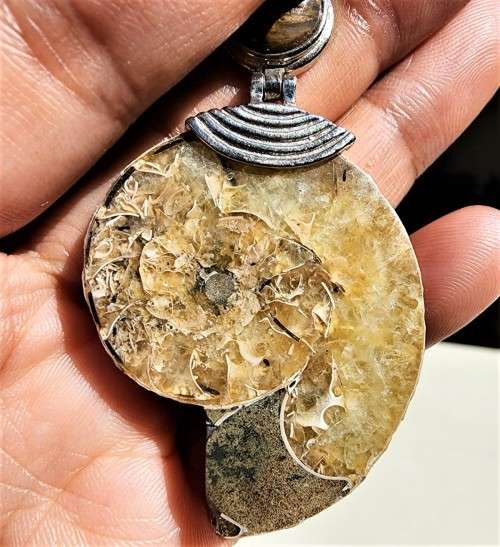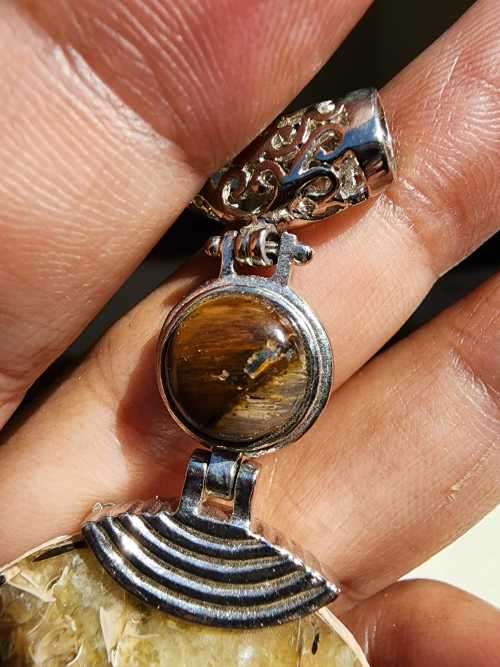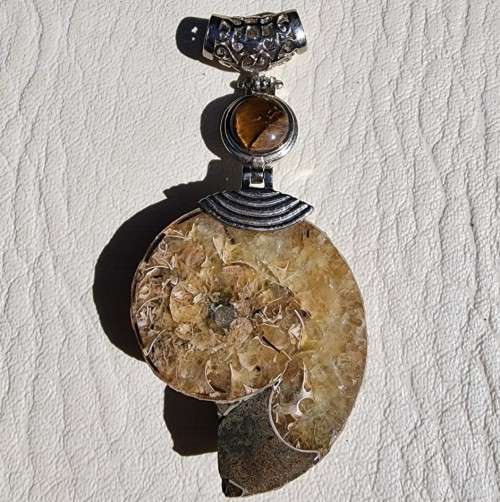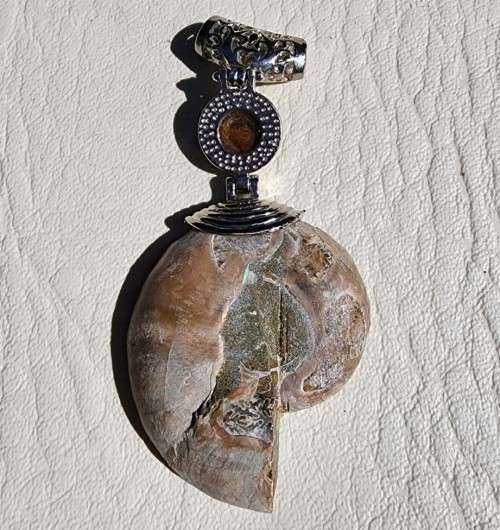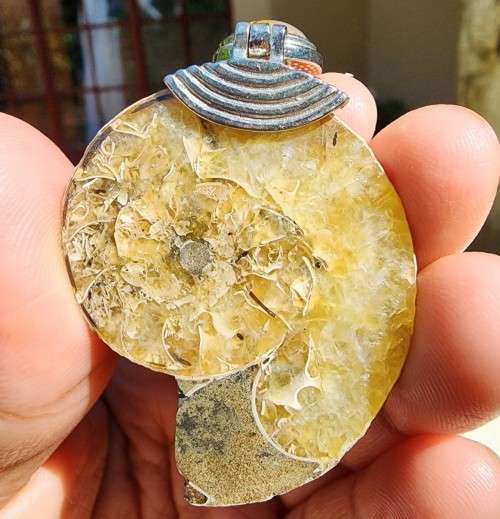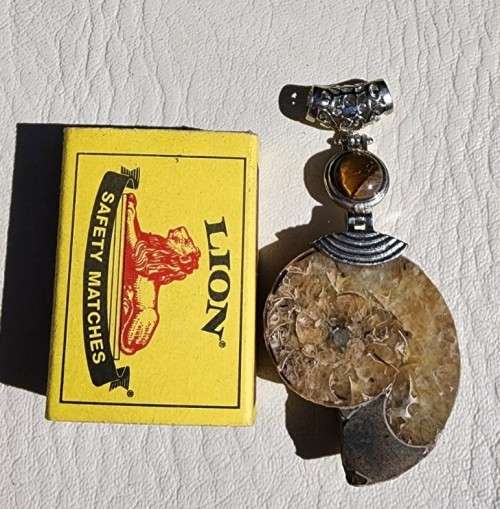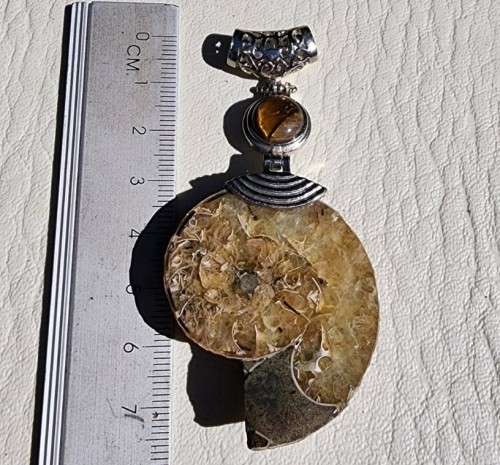POLISHED AMMONITE FOSSIL WITH A PROTECTIVE TIGER EYE GEMSTONE PENDANT
THIS IS A BEAUTIFUL 5x3,5CM CUT AND POLISHED AMMONITE FOSSIL FROM MADAGASCAR SET TOGETHER WITH A PROTECTIVE TIGERS EYE GEMSTONE IN A PENDANT.
THIS AMMONITES ARE LATE CRETACEOUS OR APPROXIMATELY 110 MILLION YEARS OLD. IT EXHIBITS GORGEOUS MINERALIZATION WITHIN THE CHAMBERS, EACH SEPARATED BY WHITE CALCITE SEPTA (DIVISIONS). THIS HIGHLY POLISHED, EXOTIC AMMONITE MAKES A SUPERB PIECE WITH TREMENDOUS HISTORICAL AND AESTHETIC APPEAL.
TIGER EYE: Tigers eye is a variety of quartz that is well known for its silky luster and beautiful striations. It has inclusions of iron and quartz, which give the stone its striped appearance and an optical effect thats called chatoyancy (chat is French for cat). Name given to the curious optical effect in which a band of light is reflected in certain cut gemstones, creating an appearance similar to light bouncing off a cat's eye.
Egyptians believed it to be a form of the all-seeing eye and used it to make actual eyes for gods statues.
Tigers eye was carried to battle by Roman soldiers, who thought it would give them the strength and courage of a tiger. The Ancient Chinese credited it with bringing good fortune to the wearer. In Eastern folklore, tigers depict courage, power, and integrity. This is why it was thought that these qualities were bestowed by the stone.
is usually opaque and found naturally in a brown or golden brown color. It is mined primarily in Africa, but is also found in Brazil, Australia, and some parts of the United States.
Size 5x3,5CM
CONDITION: VERY GOOD CONDITION.
AMMONITES AND THEIR EXTINCTION: Ammonites were predatory mollusks that resembled a squid with a shell. These cephalopods had eyes, tentacles, and spiral shells. They are more closely related to a living octopus, though the shells resemble that of a nautilus.
True ammonites appeared in the fossil record about 240 million years ago. The last lineages disappeared 65 million years ago at the end of the Cretaceous. The Cretaceous-Paleogene Extinction, also known as the K-T Boundary, saw the demise of three quarters of the Earths plant and animal species. It is believed there was a powerful impact by a celestial body, such as an asteroid or comet which altered the climate of the Earth.
Ammonites and non-avian dinosaurs are famous for their disappearance at this time. Mosasaurs, which preyed upon ammonites also went extinct.
Ammonites from Madagaskar are unusually well-preserved, and are often filled with calcite crystals making it possible to cut them in half and polish them. The details of the spiral chambers remain, and make each one a beautiful object in its own right.
Ammonites are often identified by their shell ornamentation and the structures of the wall that divide the shell's chambers.
Ammonites are named after the Egyptian god Amun, whose attribute (rams' horns) they were thought to resemble, and their fossils have been collected since prehistoric times. Ammonites are among the most common fossils, being plentiful in locations all over the world. They became extinct at the end of the Cretaceous period, the same time that the dinosaurs disappeared.
PLEASE ALSO SEE MY OTHER ITEMS. I HAVE VARIOUS OTHER INTERESTING ROCK AND MINERAL SPECIMENS ON AUCTION THIS WEEK.
























